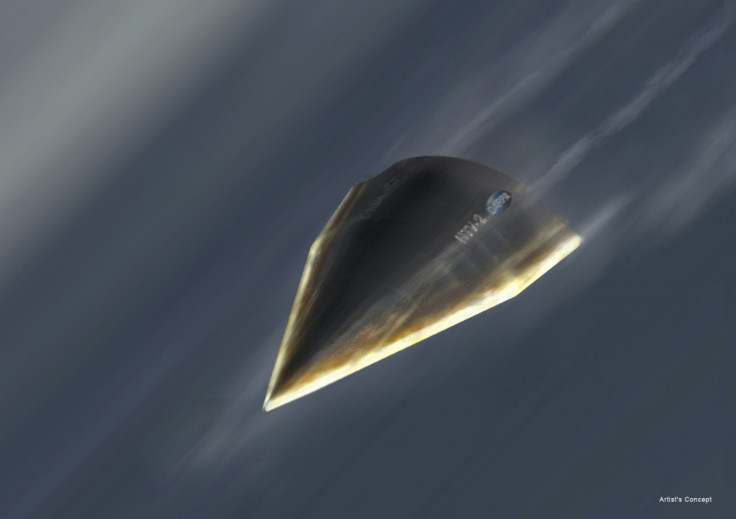Why Did The DARPA Hypersonic Glider Fail? U.S. Defense Points To Shell Degradation As Culprit

The U.S. Department of Defense has finally figured out why the DARPA hypersonic glider aborted its 13,000, mph flight over the Pacific Ocean in August 2011: shell degradation.
The Hypersonic Technology Vehicle-2 aborted its mission after large sections of its spin peeled off, the U.S. Defense Advanced Research Projects Agency found.
Extremely high temperatures seemed to be the culprit, but an independent engineering review board found that the most likely probably cause was unexpected aeroshell degradation, creating multiple upsets of increasing severity that ultimately activated the Flight Safety System, according to a statement released about its findings.
Nine minutes into the test flight, the Hypersonic Technology Vehicle-2 experienced a series of shocks culminating in an anomaly, causing the vehicle to roll, but it was able to correct itself multiple times. Yet the disturbances proved too much for the vehicle to bear and it crashed into the ocean.
The initial shockwave disturbances experienced during second flight, from which the vehicle was able to recover and continue controlled flight, exceeded by more than 100 times what the vehicle was designed to withstand, said DARPA Acting Director, Kaigham J. Gabriel according to the press release. That's a major validation that we're advancing our understanding of aerodynamic control for hypersonic flight.
The Hypersonic Technology Vehicle-2 achieved March 20, or flight speeds 20 times the speed of sound, for three minutes before it fell to the ocean.
The result of these findings is a profound advancement in understanding the areas we need to focus on to advance aerothermal structures for future hypersonic vehicles. Only actual flight data could have revealed this to us, Air Force Maj. Chris Schulz, the DARPA program manager said according to the Associated Press.
The DARPA hypersonic glider was launched from the Vandenberg Air Force Base in California atop a rocket on August 11, 2011. The aim of the research was to develop extremely-fast strike capability for the Department of Defense.
© Copyright IBTimes 2024. All rights reserved.











